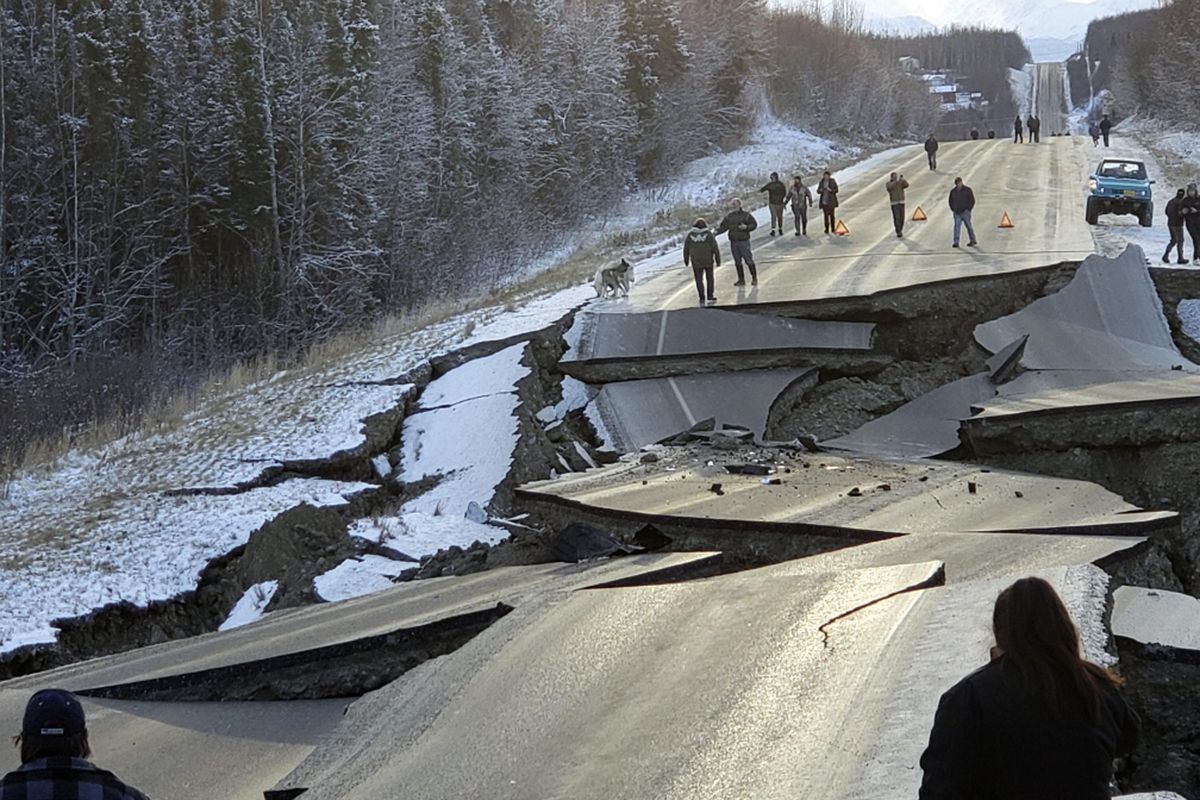Ask Dr. Universe: Shifting plates cause earthquakes

Q: How do earthquakes happen? – Aescli E., 10, Utah
Dear Aescli,
We’ve had a lot of earthquakes on our planet this year. Maybe you’ve learned about them from the news or felt one shaking up your own neighborhood. Earthquakes can happen in a few different ways.
First, it is important to know a bit about the Earth’s outer layer, or crust. The crust is made of seven big pieces called “plates.” They are about 60 miles thick and sort of float on the molten rock beneath them. That’s what I found out from my friend Sean Long, a geology professor at Washington State University who knows a lot about earthquakes.
These massive plates move very, very slowly – about one or two inches a year. But when plates slip over or under each other, collide or break away, an earthquake happens. Usually, they last just a few seconds but really big quakes can often last anywhere from 10 to 30 seconds.
After a big earthquake, we often feel a bunch of small earthquakes, or aftershocks. They happen as the crust adjusts to its new location or settles into its new spot on the Earth’s surface. If one of the plates is under the ocean, sometimes an earthquake will trigger a wave called a tsunami. Depending on the earthquake strength, the wave can be massive or even just a few centimeters high.
According to the National Earthquake Information Center, more than a million large and small earthquakes shake the planet’s surface each year. We measure the strength and size of an earthquake on the Richter Scale, which goes from one to ten. Each number on the scale is 10 times as powerful as the number before it. The really destructive earthquakes are usually measured at a strength of around 5.5 and higher.
In the last year, more than 13,000 earthquakes above a 4.0 shook our planet. When a recent earthquake shook Anchorage, Alaska, it registered as a 7.0 on the Richter Scale. The big Pacific plate at the ocean floor slid under the North American plate that Alaska sits on. By the way, if you’re curious about where some of the recent earthquakes have happened, you can check out this
While earthquakes can cause a lot of damage, they can also help build up the face of our planet. Long studies the plates near places like the Andes Mountain Range in South America, which are about five miles tall, and the snowy Himalayas in Asia, which reach even higher.
Over millions of years, as the Earth’s plates collide again and again, long chains of mountains slowly but surely emerge on the surface. It often happens along fault lines, which are breaks in the Earth’s surface. How many earthquakes do you think had to happen to create the tall mountains in the Himalayas and the Andes? Send us your ideas sometime at Dr.Unvierse@wsu.edu.
Sincerely,
Dr. Universe
Ask Dr. Universe is a project from Washington State University. Submit a question of your own at http://askDrUniverse.wsu. edu/ask.